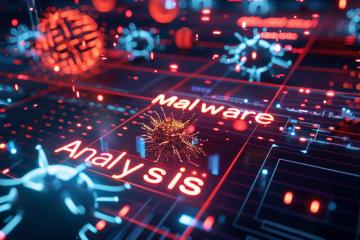
Employees are crucial in protecting the company's sensitive information and assets. By following cybersecurity best practices, employees can reduce cyberattack risk and promote workplace safety.
The following Cybersecurity tips encompass a range of proactive measures, including strong passwords, multi-factor authentication, phishing awareness, and more to strengthen an organization's digital defenses. Our goal with these tips is to empower employees to recognize, prevent, and mitigate cyber threats, ensuring confidentiality, integrity, and availability of sensitive information.
According to the survey, 39% of UK companies identified a cyber attack, consistent with previous years. According to IBM, the average cost of a data breach is 4.35 million dollars. Since this number is more significant than last year's, data breaches are becoming more financially risky.
If you work where a cyber threat can occur, this guide is for you. Keep reading to learn more about what your employees need to know.
Top 14 Cyber Security Tips
Raising awareness about cybersecurity best practices among employees is crucial for effectively safeguarding the organization.
1. Stay Informed About Cyber Threats
Encourage employees to stay current on the latest cybersecurity risks by subscribing to alerts from reliable sources like the United States Cybersecurity and Infrastructure Security Agency (CISA). This government organization provides valuable information about new online threats and strategies for dealing with them. They can sign up to receive free alerts and important cyber security information on the US-CERT website at: https://www.cisa.gov/about/contact-us/subscribe-updates-cisa
2. Use Strong Passwords
Encourage your employees to use different passwords for each account and gadget they use. Passwords should be hard to guess with a mix of uppercase and lowercase letters, numbers, and unique characters.
Additionally, employees must avoid using easily guessable information, such as birthdates or common phrases. To prevent unauthorized access to sensitive data, update passwords regularly and don't reuse them.
3. Set up Multi-Factor Authentication (MFA)
Adopting MFA adds an extra layer of security to employee accounts. This prevents unwanted access by requiring various forms of ID before accessing sensitive data.
4. Beware of Phishing Emails
Cybercriminals often use phishing emails to get employees to give out confidential data. Train employees to recognize suspicious emails and avoid clicking links or downloading attachments from unknown sources. The Federal Trade Commission (FTC) has good advice on spot hacking efforts and reports them.
5. Keeping Software Up-to-date
Emphasize the importance of keeping software, operating systems, and applications up-to-date. Installing security fixes regularly is the best way to protect against recognized vulnerabilities and cyberattacks.
6. Staying Away from Public Wifi
Advise employees to use secure Wi-Fi networks, especially when accessing sensitive information. Avoid connecting to unfamiliar or unprotected public Wi-Fi networks.
7. Protect Sensitive Data
Train employees on how to handle and protect sensitive data. This includes proper data classification, limited access to sensitive information, and secure data transfer approaches.
8. Don’t Disclose Personal Information on Social Media
Remind employees about the risks of sharing too much personal or work-related information on social media platforms. Cybercriminals can use this information to conduct specific attacks or try to trick people into giving them information.
9. Lock Your Devices
Encourage employees to maintain physical security by locking their computers away from their desks and not leaving important files unattended. Your personal or work laptops and devices should never be left unattended.
10. Report Incidents Immediately
Encourage a culture of security awareness and prompt reporting of security incidents. Employees should know how to tell the organization's IT personnel about possible breaches or strange activities. Fast reporting can lessen the damage of hacking and make it easier to respond quickly.
11. Attend Training Sessions
Organizations must conduct regular cybersecurity training sessions and awareness programs to educate employees about current threats and best practices. It’s a great way for employees to be aware of the latest cyber threats.
12. Secure Mobile Devices
Mobile devices are susceptible to security breaches. Encourage employees to set up passcodes, digital identification, and automatic smartphone and tablet updates. Point them to the Federal Communications Commission (FCC) resources for securing mobile devices.
13. Backup Regularly
Perform regular backups of your work-related data to a secure location. If you have a recent backup, you can get your information back without paying the ransom or losing important information.
14. Monitor Online Activities
Encourage employees to be careful about what they do online, especially when they use public Wi-Fi or company tools from home. When working outside the office, using a virtual private network (VPN) can add an extra layer of security.
Common Cyber Threats Employees Should Be Aware Of
| Threat | Description |
|---|---|
| Malware (viruses, worms, trojans) | Malicious software designed to damage systems, steal data, or gain unauthorized access. Can spread through email attachments, downloads, or infected websites. |
| Phishing attacks | Fraudulent attempts to trick individuals into revealing sensitive information (passwords, financial details) through fake emails, websites, or messages appearing to be from legitimate sources. |
| Ransomware | Malware that encrypts a victim's files and demands a ransom payment in exchange for the decryption key. Can cripple an organization's operations. |
| Distributed Denial of Service (DDoS) | Attackers flood a network or server with traffic to exhaust resources and make services unavailable to users. Can disrupt business operations. |
| SQL injection | Inserting malicious SQL statements into application queries to manipulate the database, steal information, or compromise data integrity. |
| Man-in-the-middle attacks | Intercepting communication between two parties to eavesdrop or alter transmitted data. Enables theft of login credentials and sensitive information. |
| Zero-day exploits | Attackers exploit a software vulnerability before developers can release a patch. Difficult to defend against as no fix is immediately available. |
Why Organizations Need to Educate Employees about Cyber Security
Organizations need to educate employees about cybersecurity for several crucial reasons. Employees play a vital role in maintaining the organization's security posture.
Create a Human Firewall
Employees are the first line of defense against cyberattacks. Organizations can create a human firewall by providing proper cybersecurity education, making it harder for cybercriminals to breach the company's systems. Educated employees can detect suspicious activities, phishing attempts, and social engineering strategies, minimizing the risk of successful cyberattacks.
Utilize Data Protection
Organizations handle private data like customer details, intellectual property, financial records, and personal data. A lack of awareness among employees about cybersecurity best practices can lead to data breaches, putting this valuable information at risk. Proper training ensures that workers know what to do to keep data safe.
Use Compliance and Legal Requirements
Many industries and jurisdictions have specific rules and legal requirements for data protection and cybersecurity. By educating employees about cybersecurity, the company avoids consequences and legal issues.
Phishing and Social Engineering Prevention
Phishing attacks, where cybercriminals trick employees into showing sensitive information, are among the most common cyber threats. Organizations can make it much less likely that an attack will work by teaching workers how to spot phishing emails and other forms of social engineering.
Have a Strong Malware Defense
Malicious software like ransomware, trojans, and viruses can wreck an organization's processes and operations. Malware may enter the network and cause widespread harm unless employees are trained to identify and report unusual files and actions.
Protecting Company Reputation
A successful cyberattack affects the organization's internal operations and can harm its reputation in the eyes of customers, associates, and stakeholders. A well-educated employee leads to a safer environment, enhancing trust in the organization's ability to protect sensitive information.
Incident Response and Reporting
Prompt and accurate reporting of cybersecurity incidents is critical to mitigate their impact. Educated employees are more likely to recognize potential security incidents and promptly report them to the appropriate IT personnel, allowing for a faster and more effective response.
Remote Work Challenges
With the rise of remote work, employees access company resources from various locations and devices, making the organization more vulnerable to cyber threats. Educating employees about secure remote work practices helps maintain a strong security posture in this new work environment.
Cybersecurity Incidents Caused by Human Error
| Statistic | Description | Source |
|---|---|---|
| 88% of data breaches involve human error | A significant portion of data breaches occur due to human mistakes. | Stanford University & Tessian |
| 95% of cybersecurity breaches stem from human error | Human error is a leading cause of security vulnerabilities exploited by attackers. | IBM Security |
| 74% of data breaches in 2023 were attributed to human error | Human error continues to be a substantial factor in recent data breach incidents. | Verizon |
| Nearly 50% of employees admit to making security errors | A concerning percentage of employees acknowledge potential security lapses in their actions. | Stanford University & Tessian |
| 45% of respondents in a study identified distraction as the primary reason for falling victim to phishing scams | Lack of focus and awareness can significantly increase susceptibility to cyberattacks. | Stanford University & Tessian |
Real-Life Hypothetical Scenario
A multinational firm's IT department notices increased suspicious activity and potential cyber-attack attempts on its network. The company organizes an awareness training session for all employees to reinforce their security measures. Here's how the scenario unfolds:
The Cyber Security Training Session
The IT department organizes a mandatory security training session for all employees. They bring in an expert in computer security to teach the course. The expert begins by discussing rising cyber dangers and their hazards to people, corporations, and financial institutions like theirs.
Recognizing Phishing Attacks
During the training, the expert stresses the importance of being careful when using emails and other contact forms. They show different types of scam schemes and emails that might have dangerous links or files. The employee learns how to spot strange emails and not fall for phishing scams.
Password Security
The expert discusses how important strong passwords are and why you should use different passwords for each account. They show employees how to make passwords that are hard to guess using uppercase and lowercase letters, numbers, and special characters.
Multi-Factor Authentication (MFA)
The training explains how MFA works for employees. Employees learn that MFA adds an extra layer of security by needing a second form of proof (like a one-time code sent to a phone) and a password to access private accounts and data.
Secure Use of Devices
The expert suggests the safe use of personal devices, particularly when accessing company resources remotely. The employees learn about the risks of using public Wi-Fi and the importance of using Virtual Private Networks (VPNs) to protect data when working outside the office.
Data Protection and Privacy
The training stresses protecting private data and client information. Employees learn how the company protects data and how to secure data so that only authorized people can view it.
Social Engineering Awareness
The expert educates the employees on social engineering techniques, emphasizing that cyber attackers might manipulate them to gain unauthorized access to information. Employees learn to report suspicious incidents to the IT department.
Update software regularly
The training stresses keeping software, apps, and running systems up-to-date. Employees know that these changes usually come with security patches that fix flaws that hackers could use.
Secure File Sharing
The expert talks about safe ways to share files within the company and with clients outside the organization.
Incident Reporting and Response
The training ends with information focusing on cyber incidents and suspicious activities. Employees are encouraged to be proactive and immediately report any potential security breaches to the IT department.
Cybersecurity Best Practices Checklist
- Use strong, unique passwords for each account
- Enable multi-factor authentication (MFA) whenever possible
- Keep software, operating systems, and applications updated
- Be cautious of phishing emails and avoid clicking suspicious links
- Secure home and public WiFi connections, using VPNs when necessary
- Lock devices when unattended
- Report suspicious incidents promptly to IT personnel
- Attend regular cybersecurity training sessions
- Backup work-related data to secure locations regularly
- Be mindful of social media sharing and online activities
Future Consideration
To avoid possible risks, employees must know about and be able to use advanced cybersecurity techniques.
Here are some future considerations you could implement:
Quantum-Safe Practices: With the emergence of quantum computers, traditional encryption methods may become at risk. To protect their data, employees should be taught how to use encryption and authentication methods that are safe against quantum attacks.
AI-Enhanced Threat Detection: Embrace AI-driven tools for threat detection and response. Encourage employees to learn about and trust these tools so that online risks can be quickly found and dealt with.
Biometric Authentication: Fingerprint, facial, and behavioral biometrics could become standard for accessing sensitive systems.
Blockchain for Data Integrity: Explain how blockchain can protect critical data. Employees should know how it can be used and what it can't do.
Connected Devices (IoT) Security: As the Internet of Things (IoT) grows, employees need to know what risks smart devices can pose. Teach them how to protect and update IoT devices so they can't be broken into.
Incident Response Drills: Run realistic cyber attack simulations and drills to train employees to handle cyber incidents.
Supply Chain Security: Ensure everyone knows how important it is to check and secure the digital supply chain to avoid third-party leaks that could risk the organization's data.
Privacy-Centric Culture: Foster a culture of privacy where employees understand the value of personal and sensitive information. Encourage people to handle data responsibly and to follow the ever-changing rules about data security.
Security for Remote Work: Since working from home is becoming more common, give instructions for protecting home networks, using virtual private networks (VPNs), and keeping company information safe outside of the office.
Cybersecurity is an ongoing effort that requires the active participation of every employee within an organization. These cybersecurity techniques might help organizations defend against attackers.



